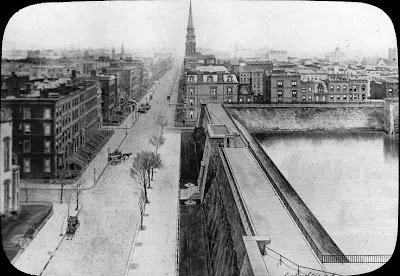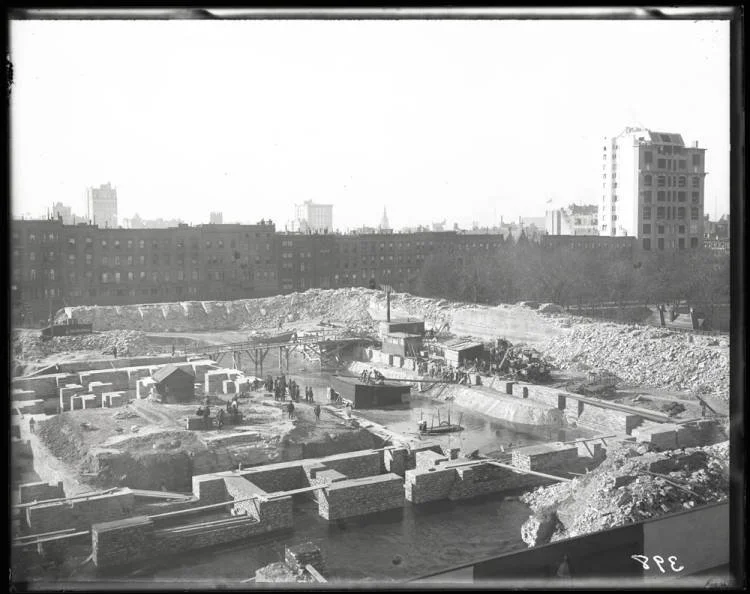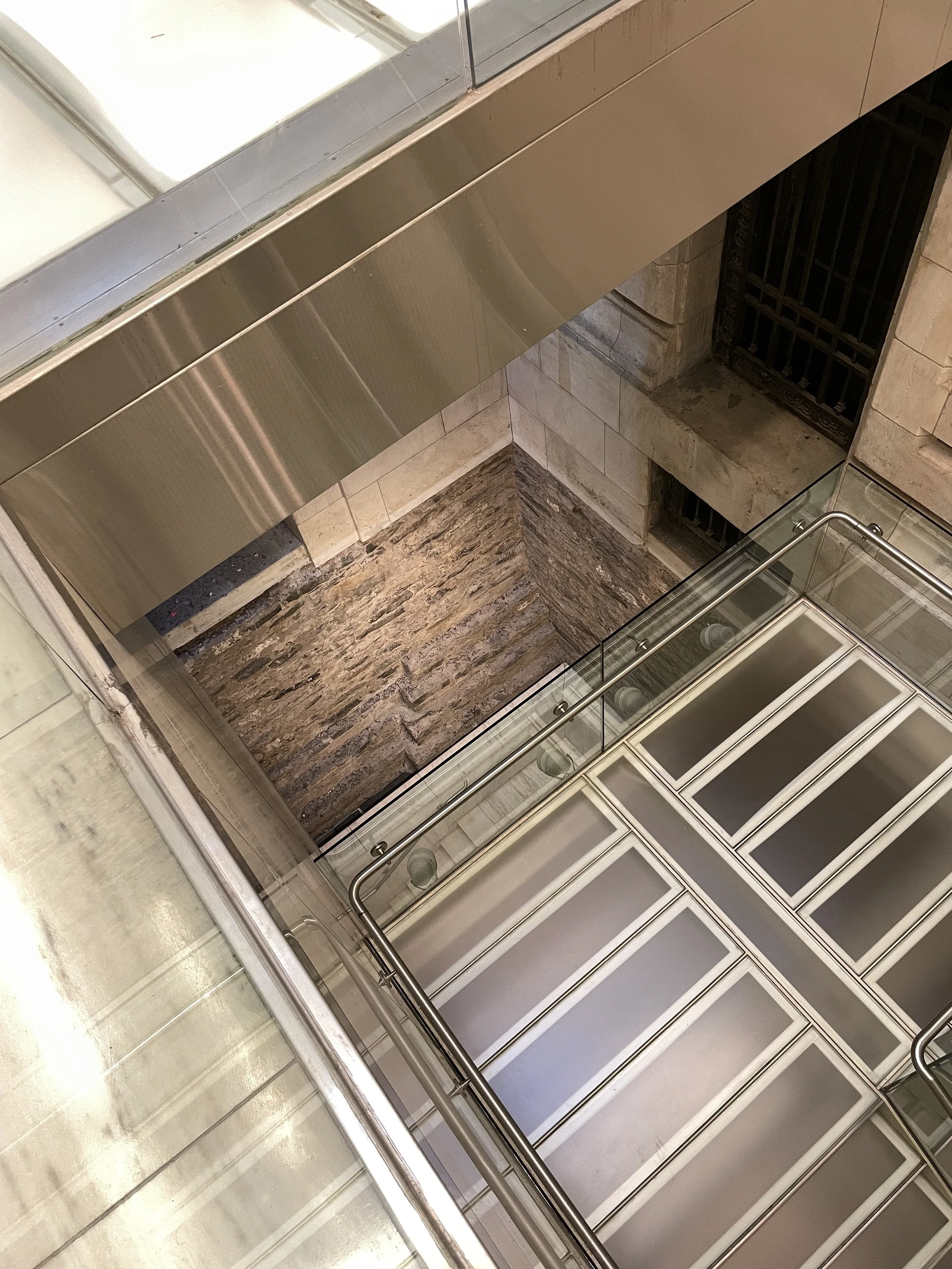The Old Croton Distributing Reservoir
New York City water… it’s a thing! Ask any local New Yorker and they’ll beam about the cold, crisp, clean taste of our city’s water. But water wasn't always so abundant here in New York City.
Before 1837, New Yorkers relied on wells, cisterns, and barrels to collect rainwater for their daily needs. With buildings predominantly constructed of wood, firefighting was a constant challenge due to the lack of a reliable water supply. It was the visionary leadership of DeWitt Clinton, a former Mayor of New York City and champion of the 1811 grid plan and Erie Canal, that helped transform the city's water supply. Clinton proposed that the city tap into the abundant water resources of the Croton Reservoir located upstate. Thanks to Clinton's foresight and determination, construction of the Croton Aqueduct began in 1837 and was completed in 1842. The aqueduct brought fresh water to the city, greatly improving public health and safety while also enabling the city to grow and thrive.
Photo by NYPL Digital Collection
Completed in 1842 and designed in the Egyptian Revival style by the one and only James Renwick Jr., who at the time was largely unknown, the Murray Hill Reservoir or Croton Distributing Reservoir spanned the entire block from 5th Avenue to 6th Avenue with 40th and 42nd Streets as its northern and southern borders. It was massive…50-foot high retaining walls with a wide promenade on top, four acres and a capacity of 20 million gallons.
Photo by Library of Congress
It cost $8 per year for clean drinking water from the reservoir.
Photo by NYPL Digital Archives
It's remarkable to think that at one point in time, 42nd Street and 5th Avenue were considered to be far north of the bustling center of New York City. Despite this distance, however, the Murray Hill Reservoir proved to be a popular destination for city dwellers looking for a weekend getaway. Visitors would take carriage rides up north to the reservoir, where they could walk along the promenade that encircled the massive structure. From this vantage point, they could gaze out at stunning views of the cliffs of the Palisades in northern New Jersey, as well as take in the impressive skyline of downtown Manhattan. Even famed writer Edgar Allan Poe was said to have enjoyed a leisurely stroll along the promenade of the reservoir, perhaps finding inspiration in the scenic vistas that surrounded him!
Photo by NYPL Digital Archives
Over time, wealthy New Yorkers began moving northward and building ornate mansions along Fifth Avenue. The very utilitarian Murray Hill Reservoir soon became an eyesore for the rich. It was demolished in 1898 making way for the main branch of the New York Public Library.
Demolition in 1898
Photo by NY Historical Society
The New York Public Library 1913
Photo by NYPL Digital Archives
Today, midtown Manhattan is more commercial than residential, although there are condos hidden throughout some of the streets. It’s hard to imagine today, staring out at the well manicured Bryant Park and temple-like structure of the Stephen Schwarzman Building of the New York Public Library, that it was once all under water! If you feel like exploring, inside the library at the base of a stairwell going to the lower stacks you can find remains of the reservoir’s foundation as you can see in the photo I took below.
The old reservoir foundation in the NYPL
Photo by Chris Baker






